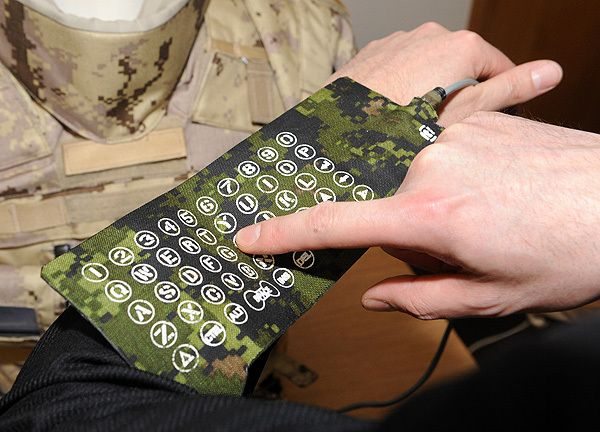New technology, including SAPI-plate-shaped batteries, came out of the recent limited user test for the Nett Warrior system. During a media roundtable Feb. 2, in the Pentagon, Col. Will Riggins, program manager for Soldier Warrior, discussed feedback from the recent Nett Warrior limited user test and the concurrent Land Warrior assessment in theater.
“I think probably the best feedback, the best data point was for both of those assessments — was it’s just a game-changing capability — knowing where you are, where your teammates are,” Riggins said.
Nett Warrior is a system worn on a Soldier’s body that will provide “unparalleled situational awareness” to Soldiers on the ground. The system includes a radio, a helmet-mounted display and a hand-held data input device. The wiring for the system is integrated into a protective vest. With Nett Warrior, Soldiers will be able to see their location, the location of their fellow Soldiers, and the location of known enemies on a moving map.
“What this system will mean is they are never lost, never out of reach of their buddies,” said Riggins. “They are able to adapt to dynamics of changing combat, and able to share all that information about all aspects of their mission in order to cut through that fog of war.”
With Nett Warrior, there are issues of power consumption, system size and system weight. One solution, Riggins said, is the use of form-fitting batteries. Batteries molded in the shape of protective plates might allow systems like Nett Warrior to be powered, but with less bulk on the Soldier.
“The battery we have now looks like a brick and fits on your body as well as a brick,” Riggins said. Using side small-arms protective-insert plates as a model, they asked industry to build a battery that was similarly shaped.
While Riggins said the battery might not go into the same location as the SAPI plate — the pocket inside the vest — but it will more closely conform to the shape of the body, and will fit easier on a Soldier.
The conformal batteries were demonstrated during an “excursion day” at the end of the Nett Warrior LUT, which ended in November. Riggins said during the excursion day, industry was challenged to bring their best ideas to the table.
“What we want to see is what are the game-changing technologies … that we can bring into this area of operating in any environment and being situationally aware,” he said.
Coming out of that excursion day were the conformal plates, and power-generation capabilities that included solar blankets and power cells, and a generator Riggins described as a “scavenger.”
“(It’s) a generator that runs off multiple different types of fuel,” Riggins said, “if you happen to run across JP8 or diesel or even gasoline. With some small adjustments — it’s got an adjustable carburetor on it — you can generate power based on whatever you can get off the battlefield. So those are the great types of capabilities that we’ve got.”
Riggins said feedback on some of the equipment was so strong, one unit did an operational needs statement to get some of the equipment to take with them to Afghanistan. That unit took conformal batteries, solar blankets, and smaller power cells — in the 30-to-50-watt range — that act as a squad-rechargeable-type capability that runs off methane.










